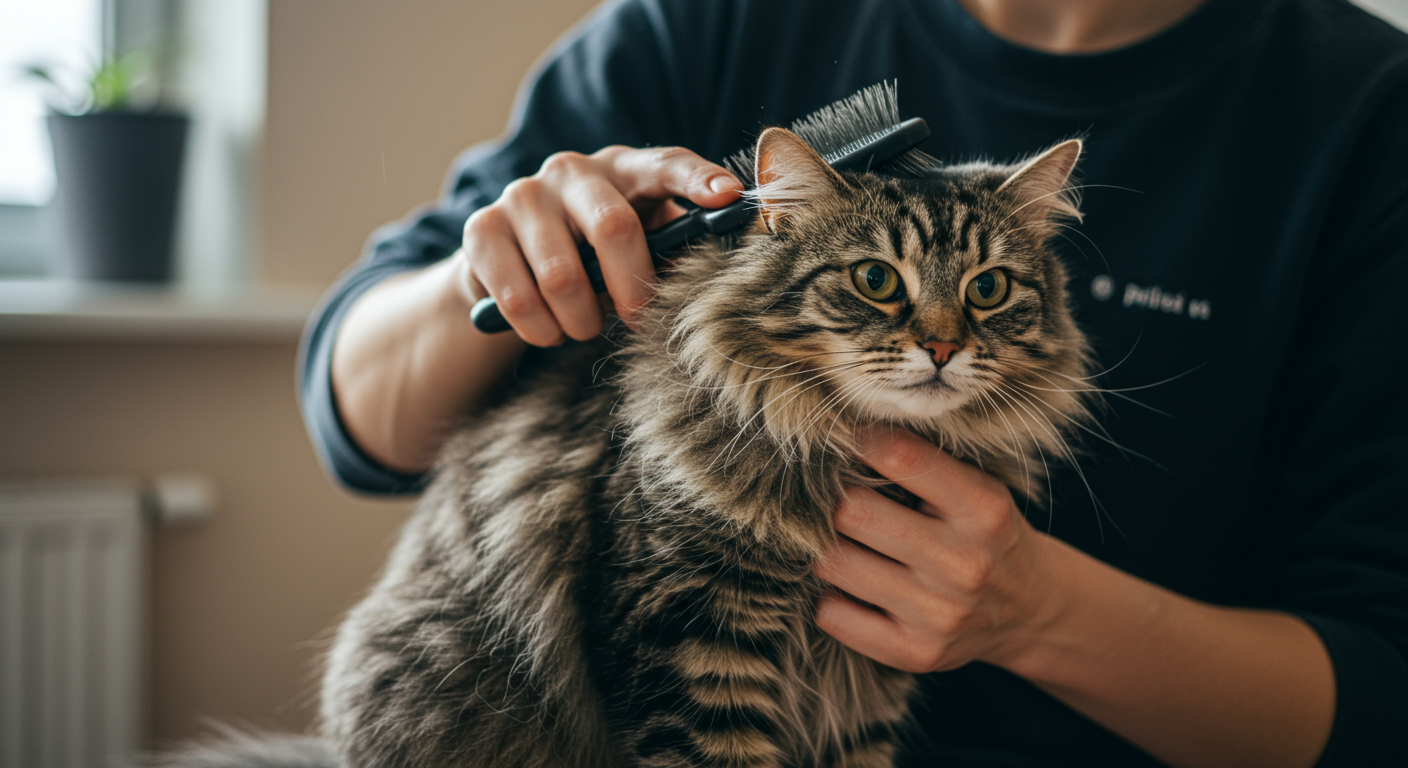As experienced cat parents, you understand that grooming is far more than just making your cat look pretty; it's a vital part of their overall health and well-being. This guide delves into advanced grooming strategies, helping you maintain your cat's coat, prevent common issues, and strengthen your bond.

Deep Dive into Cat Grooming for Advanced Pet Parents
Regular grooming can prevent hairballs, detect skin problems early, and distribute natural oils for a healthy, shiny coat. Grooming also offers quality time with your cat, which can reduce stress for both of you. Understanding your cat's specific breed and coat type is crucial. Long-haired breeds, like Persians and Maine Coons, require more frequent and dedicated grooming than short-haired breeds. Also, consider your cat's personality; some cats enjoy grooming, while others are more resistant. Patience and positive reinforcement are key to a successful grooming routine.
Advanced Strategies and Insights
Brushing Techniques
- Long-haired breeds: Brush daily with a slicker brush or a wide-toothed comb to prevent mats and tangles. Start with a gentle brushing session and gradually increase the time as your cat becomes accustomed to the process. Follow up with a metal comb to ensure all loose hair is removed.
- Short-haired breeds: Brush a few times a week using a rubber brush or a grooming mitt to remove loose hair and stimulate the skin.
- Dealing with mats: For small mats, gently try to tease them apart with your fingers or a mat splitter. For larger mats, professional grooming may be needed to avoid causing pain or injury.
Nail Trimming
- Frequency: Trim your cat's nails every 2-3 weeks.
- Technique: Use cat-specific nail clippers. Hold your cat's paw gently and identify the quick (the pink part of the nail that contains blood vessels and nerves). Trim only the tip of the nail, avoiding the quick. If you accidentally cut the quick, apply styptic powder to stop the bleeding.
- Desensitization: Get your cat used to having their paws handled from a young age. Make it a positive experience with treats and praise.
Dental Care
- Brushing: Ideally, brush your cat's teeth daily with a cat-specific toothbrush and toothpaste. Introduce the process gradually.
- Dental treats and toys: Supplement brushing with dental treats and toys designed to help remove plaque and tartar.
- Professional cleanings: Schedule regular dental checkups and cleanings with your veterinarian, especially if your cat is prone to dental issues.
Optimizing Your Pet's Health
Recognizing Signs of Health Issues
Grooming is an opportunity to check for signs of skin problems, such as fleas, ticks, lumps, or changes in skin condition. Pay attention to any unusual shedding, bald patches, or excessive scratching. If you notice any of these, consult your veterinarian immediately.
Navigating Complex Pet Challenges
Dealing with a Cat that Hates Grooming
- Start slowly: Begin with short grooming sessions and gradually increase the duration.
- Positive reinforcement: Use treats, praise, and toys to create a positive association with grooming.
- Desensitize: Get your cat used to the tools by letting them sniff and explore them.
- Professional help: If your cat is extremely resistant, consider consulting a professional groomer.
Grooming Elderly Cats
Senior cats may have difficulty grooming themselves. Assist them by brushing them more frequently, trimming their nails, and cleaning their eyes and ears.
Integrating Advanced Care Practices
Selecting the Right Tools
- Brushes: A slicker brush is excellent for removing mats and loose hair, while a comb is good for finishing touches. For short-haired breeds, try a rubber brush or grooming mitt.
- Nail clippers: Opt for cat nail clippers with a safety guard to prevent over-clipping.
- Dental care products: Use a cat-specific toothbrush and toothpaste. Consider dental chews or water additives for added dental hygiene.
Long-Term Wellness & Longevity Tips
Maintaining a Healthy Diet
Feed your cat a high-quality diet that supports skin and coat health. Look for food with omega-3 and omega-6 fatty acids.
Regular Vet Checkups
Schedule regular checkups to monitor your cat's overall health, including skin and coat condition. Your vet can identify and address any health issues early on.
Expert-Level Pet Care Insights
Grooming your cat is a continuous process. It involves observation, adaptation, and a deep understanding of your cat's individual needs. Regular grooming isn't just about aesthetics; it's an important part of preventative care and bonding with your feline friend.